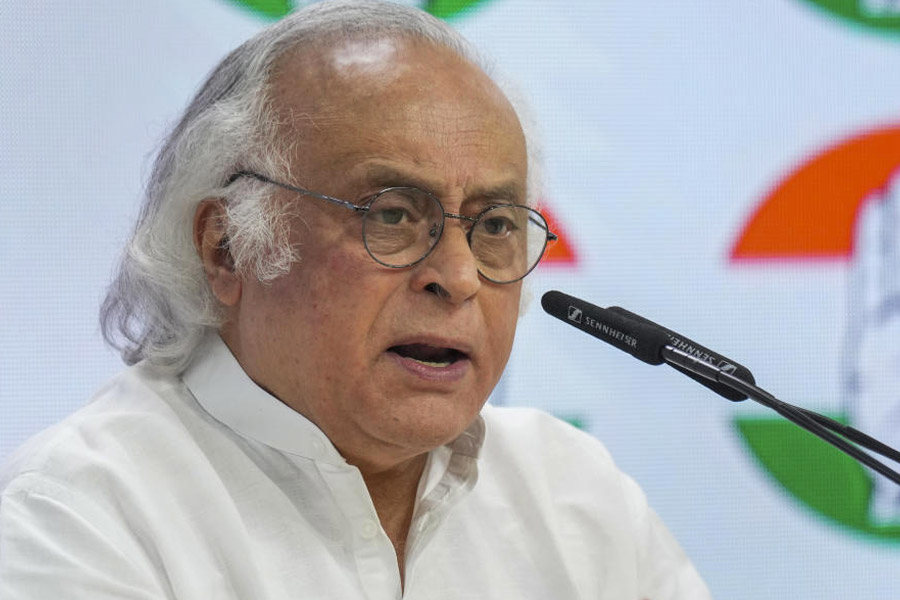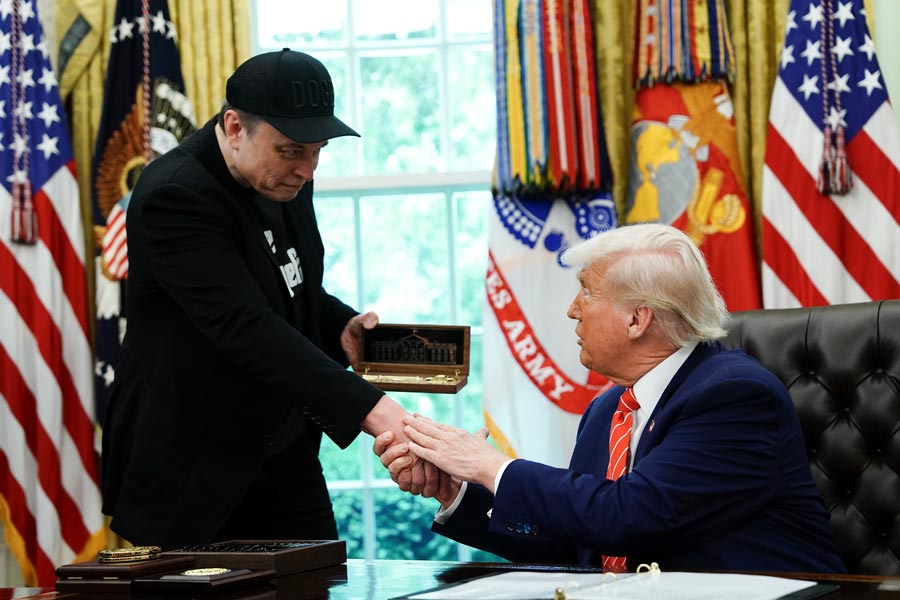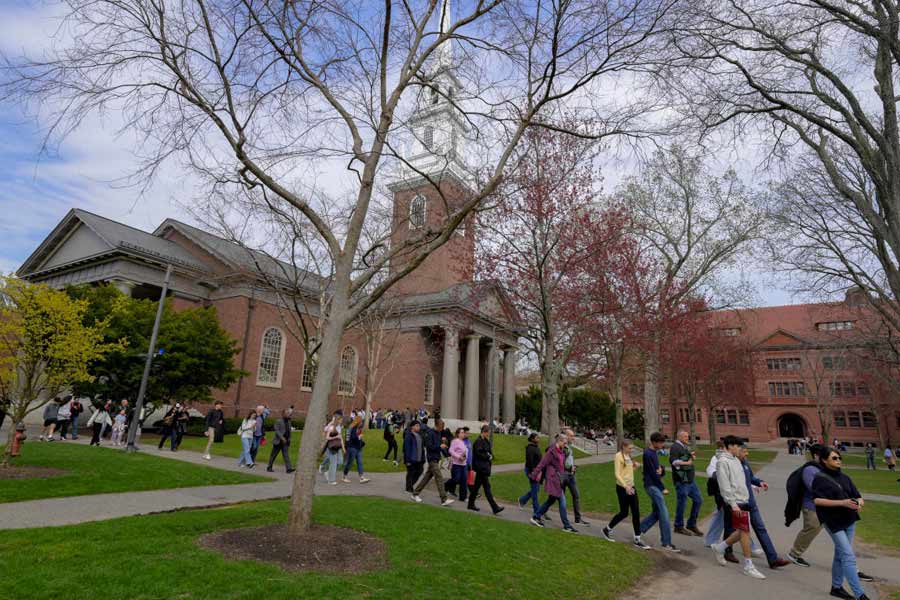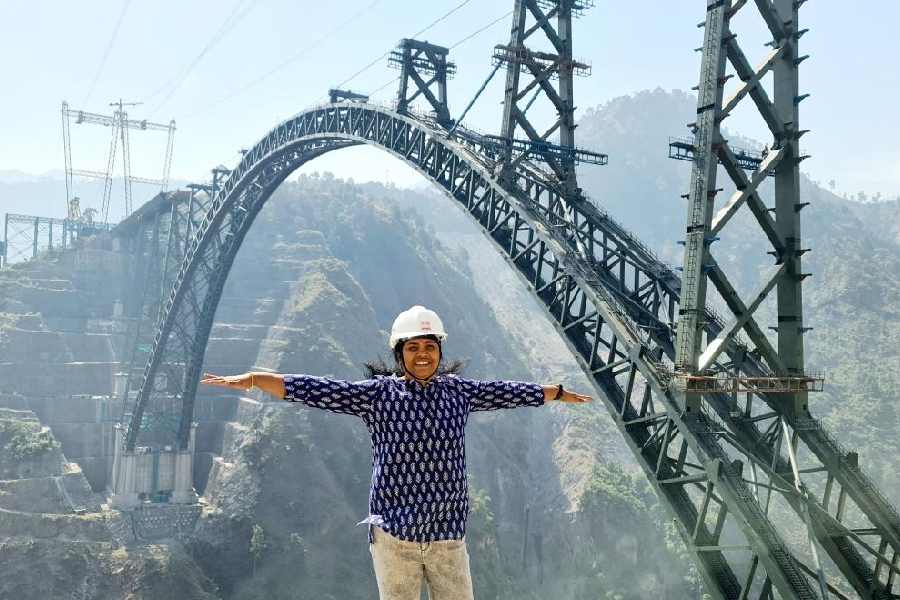 |
 |
 |
| (From top) Saradindubala, the wife of Dhirendranath Chattopadhyay; family guru Prasannamohan Goswami of Khardah and his wife Mangala; retainer “My Old” Gobinda Das |
Family trees and albums of family photographs are common enough. But an entire book with paintings and photographs of all family members, including those on the distaff side, published in 1920 is a rarity.
The book is titled Madanmohan Kulapanji. Roughly translated, it means the family line of Madanmohan, and the man after whom the book was named was the nephew of Dwarkanath Tagore. The ancient seat of the family was at 12 Madan Chatterjee Lane next to Dwarkanath Tagore Lane in Jorasanko.
The house they lived in was constructed in 1840 and sold off in 1928. It was printed by U. Ray & Sons, Calcutta, at a cost of Rs 900.
Kalyanaksha Bandyopadhyay, 74, of Pathuriaghat is a descendant of this illustrious family, from his mother’s side. All the male members were professionals who did not live off the income of the zamindari, unusual in those times.
Kalyanaksha is gifted with a prodigious memory for dates and names. He related the story of his forebears.
Madanmohan Chattopadhyay’s grandfather was Ramsundar, who was the dewan of the French government in Chandernagore. Madanmohan (1806-1887) was born in the Jorasanko house of the Tagores and as Dwarkanath’s nephew, inherited Rs 10,000 and 10 cottahs.
His brother, Chandramohan, who was single, became the first deputy magistrate, the first assessor of income tax and the first registrar of assurances of Bengal. He accompanied Dwarkanath when he visited England. A road in the area is named after him.
Many legal luminaries and political figures were born in this family. Madanmohan’s great grandson, Khagendranath (1873-1943), who was an attorney, had literary interests and made the family culturally aware. He had dedicated his life to the Bangiya Sahitya Parishad, of which he was secretary, had written a book titled Rabindra Katha, and the poet himself had conferred on him the title of tathya samrat or emperor of information.
Khagendranath’s son Ramendranath (1900-1944) had brought a new wave in stage decor and costumes designed in keeping with the historical context of a play. He had learnt painting under Abanindranath. His tutors were thespian Sisir Kumar Bhaduri, historian Rakhaldas Bandyopadhyay and linguist Suniti Chatterjee. Khagendranath’s nephew was Dwarkanath who was the son of Gaganendranath Tagore’s daughter.
Even the photographs of two old retainers are included. However, they are not referred to as such but as “Old Madhusudan” and “My Old Gobinda.”
The use of the possessive pronoun seems significant. Were servants considered chattels, or are we reading too much meaning into it?
 |
 |
| (Fron top) Swarnamoyee Debi, wife of Dinendranath, and Madanmohan Chattopadhyay |
They share the surname “Das” and one wonders what caste they belonged to.
Quite inexplicably, Dwarkanath Tagore’s coat of arms is included here. There are also specimens of handwritings of family members. Most portraits are signed both in English and Bengali.
The most amazing are the womenfolk of this family. Not only the daughters of the family but even the brides kept their heads uncovered at a time when this was de rigueur. The Kulapanji begins with a photograph of Khagendranath with a walrus moustache and wearing a shawl, sitting in a chair, with an open book (presumably the Kulapanji) on his lap. He was Kalyanaksha’s great grandfather and Ramendranath was Kalyanaksha’s grandfather.
Next is a photograph of the Kali image worshipped in the family. Then come the family guru and his wife, Prasannamohan Goswami and Mangala Debi, respectively, of Sripat Khardah.
Thereafter, is a copy of a punthi. An image of the three-storeyed house with a pond at 12 Madanmohan Chatterjee Lane at Singhibagan in Jorasanko follows, after which are photographs of the thakurdalan, a house on the river bank at Baidyabati named Auckland House, and of other properties. There are, besides, many children photographed in studios.
Many of the plates are in colour. In keeping with their station, the men wear heavy shawls and headgear made by twisting lengths of cloth that remind us of Raja Rammohun and Bankimchandra. Down the line, the clothes of the men become markedly Westernised. The women too sport hairstyles and blouses that show a distinctly Western influence.
The painting styles are specified. Chandramohan smoking a hubble-bubble was painted around 1831 in Agra by a local artist. Another oil painting of his is dated 1842 and was presumably painted in England. Dinendranath Chattopadhyay’s wife Swarnamoyee (in colour) is bejewelled and in a white sari with blue border and with parted hair exposed.
 |
| The seat of the Chattopadhyay family in Jorasanko |
Dhirendranath’s wife, Saradindubala, is in a decorous full-sleeved blouse in her early years. In old age she sits in her puja room in her sari without a single stitched article of clothing on. Priyanath’s wife, Mohitkumari, turned Mahanandi Bharati, a sanyasini, after widowhood. With the passing of years, the women wear simple but sophisticated clothes, that later became Westernised in a forced manner. Tarabati Debi, photographed at 13, wears a headband, presumably in the classical Greek style. She died at 17.
The girls of the house are paired with their husbands. The most famous of the husbands was Dinendranath Tagore, whose wife was Kamala Debi, granddaughter of Amarendranath Chattopadhyay.










